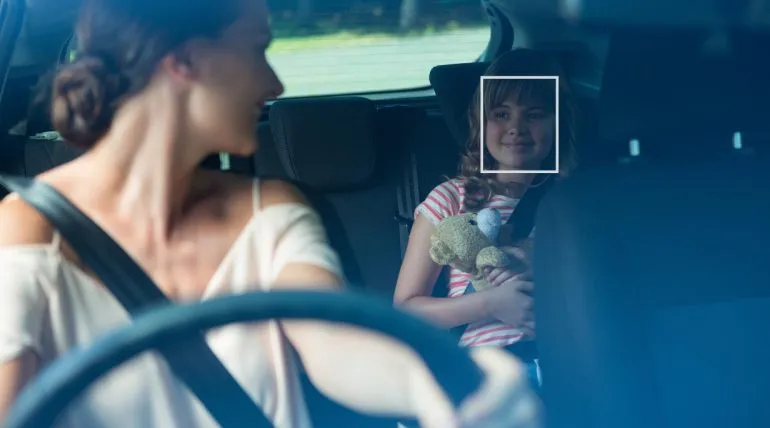The importance of a passenger monitoring system

Just like we use our eyes to figure out what is happening around us, cars rely on AI-powered cameras to “understand” what’s happening in the cabin. Keeping an eye on the entire cabin opens up many opportunities for improvement when it comes to passengers’ safety and comfort.
Passenger monitoring – what and how
Different passengers have different needs – from entertainment to safety. Passenger monitoring can help properly respond to those needs in a timely manner.
To provide a satisfactory level of personalization, it’s necessary to gather as much data as possible. For example, using visage|SDK, it’s possible to:
- Detect and track one or multiple passengers’ faces
- Estimate their age and gender
- Estimate current emotions
- Identify passengers
All that data is processed securely, locally, and in real time. It can be combined and used to better understand the in-cabin environment and properly react to specific situations and passenger states. For example, it can help the car understand how many passengers there are in the back seat, who they are, what their relative position is, how they are feeling, and more. Such information can help improve passenger safety and introduce a higher level of comfort in cars.
Keeping the passengers safe
By combining the information about passengers’ gender, age, relative position, etc., the system can adjust the car’s safety features to each individual passenger.
For example, children require special precautions in cars, such as a child safety seat or seat belt. Therefore, when the system detects a child, it can remind the driver to check if all the needed safety measures are in place before starting the car. Furthermore, the system can adjust the seat belt and airbag deployment to a specific passenger based on their age, gender, and position. Finally, the system can alert the driver about an unattended child or pet to prevent hot car fatalities.
Personalization in service of comfort
Besides safety, passenger monitoring can help improve comfort as well. The in-car environment can be adjusted to the number and demographics of the current passengers. This includes air temperature, content recommendations and volume, seat adjustments, and other environmental controls.
The system can also respond to passengers’ emotions. For example, if the passengers seem very sad or angry, it can suggest soothing music. If they seem tired, it can adjust the seats so that they can take a nap more comfortably. If it detects fear on their faces, it can notify the driver to slow down.
A passenger monitoring system can also make use of face recognition to “remember” the passengers and their preferences. That way, the car can automatically personalize its environment for the recognized passenger as soon as they enter the cabin.
The future of in-cabin experience
As autonomous and semi-autonomous cars get closer to mainstream sales, the focus of cabin monitoring expands from the driver to the entire in-cabin environment. The goal is to make each ride safe and enjoyable for every passenger involved. To do so, it’s crucial for the cars to “understand” who their passengers are and what they need in real time.
Here at Visage Technologies, we’ve created technology that helps car manufacturers create a custom monitoring system tailored to the specific needs of their customers. We also offer custom development of ready-made solutions and new features that help automotive leaders create the ultimate riding experience. If you’d like to try out our solutions yourself, we’d be happy to hear from you.
Create the ultimate riding experience
Explore our cutting-edge technology with our experts and discover how it can level up your automotive business.

